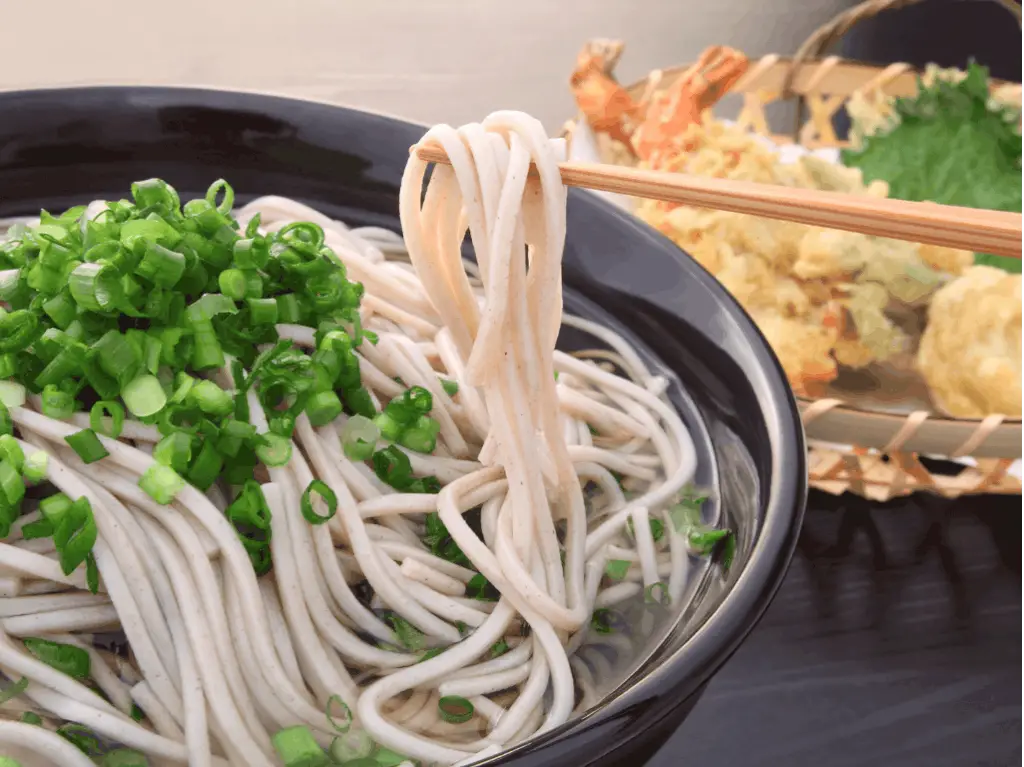Basic soba noodles are deceptively simple, even the name can mislead slightly. You’d think any foreign food would have some trick to it, some twist on the way it’s prepared that completely throws you off. To avoid that unpleasant possibility, I’m going to explore how long you should cook soba.
To cook soba noodles, all you need to do is boil them in water for approximately 5-7 minutes. They’re Japan’s answer to traditional pasta noodles, and can even be prepared Italian-style. Ultimately, it’s what you do to the noodles that make them interesting.


This blog will discuss how to cook the perfect soba noodles for any meal, as well as offer some tasty suggestions on how to use them.
How Long to Cook Soba Noodles?
One of the joys of cooking foreign cuisine is that it’s not all that different in terms of preparation, it’s just the names that can make them sound so exotic. Words like gyoza (Chinese dumplings) and miso make everything fancier. Hearing it for the first time, one wouldn’t know if gyoza were a kind of sushi, dumpling or some sort of desert.
One seeking the answer to how long to cook soba noodles should think of them just like pasta noodles and should treat them as such. Here are some tips for making the best quality soba noodles.

Never Overcook
Often, amateurs complain that they’ve come out too sticky or gummy. This is commonly due to overcooking them, so it’s important to keep a close eye on the timer. Italian noodles are made to withstand this, but soba noodles are much more delicate. Overcooking can lead to a complete mess, where the noodles barely have a form.
Clumping
Another major problem a lot of people have is the issue of clumping. This occurs when the noodles are too tightly packed into the water. You don’t want to overstuff the pot. Generally, you want a very large pot of water for even just six or eight ounces of noodles. They need the room to move around and absorb the water.
Cool Them
After putting them in hot water, it’s best to get them into a pot of cold water as fast as possible. Putting them in a pot rather than rinsing them under the tap is a better option as it doesn’t compact the noodles and still gives them room to float around freely.
After taking them out of the water, transfer them onto a paper towel to let them dry.

Oftentimes, soba does not need the full five minutes in the boiling water. You have to account for how much soba you’re actually cooking. Here’s a fast, easy recipe for cooking the best soba noodles possible.
Ingredients:
- 3-4 oz dry soba noodles.
- Sesame oil
- Soy sauce
- Sesame seeds
- Scallions
Step 1
Fill a large pot of water and bring it to a boil. Add in the noodles using tongs and spread them around the water, giving them as much space as you can. This is incredibly important, as it will really make a difference in terms of the noodles’ chewiness and stickiness. If, after draining the pot, the noodles are still clinging to it, they are likely overcooked.
Step 2
Cook the noodles for exactly two and a half minutes. If it helps, just count to 150 or set a timer and watch it carefully.
Step 3
After you’ve counted or the timer went off, drain the noodles immediately into a strainer, then transfer them to a pot of cold water. This process should take a matter of seconds, as you don’t want to lose any time.
Step 4
After the soba cools, transfer it to paper towels and gently pat it dry, then let it sit.
Step 5
Toss the noodles in a bowl with about a teaspoon of both sesame oil and soy sauce. Soba noodles have a flavor all their own, and you don’t want to overwhelm it with seasoning, though this compliments the meal well.
Step 6
Enjoy it right away or at your leisure. Soba noodles can be easily reheated if you’d like to wait, though most people prefer them fresh.
The key to a lot of Japanese cooking is subtlety. Be it ramen or soba noodles, you never want to overwhelm with flavor, as the meals are meant to be somewhat secretive with their flavors. It’s part of the joy of the cuisine, though commonly some people like to blend it with others. This is a perfectly acceptable thing to do, and soba noodles can be curiously paired with spaghetti sauce.
It’s always preferred, on the first try at least, to have any foreign cuisine as it is prepared in its home country. It’s a great way to really connect with other cultures – through the love of food.